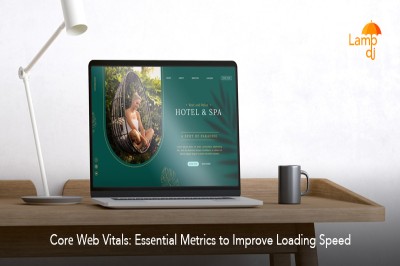Using Data Analytics to Improve E-commerce Web Design

Data analytics has become a transforming tool in the fast-paced e-commerce environment, where competition is severe and client expectations are always shifting. Using data-derived insights, companies may improve their websites to fit user needs, increase performance, and raise conversions. Including data analytics into e-commerce site design can help UAE businesses—especially those collaborating with marketing firms in Dubai—thrive in this very competitive market.
Understanding Data Analytics in E-commerce
Data analytics is the methodical study of unprocessed data in search of trends, patterns, and useful insights. For e-commerce, this entails examining consumer interactions with your website, tastes, and behaviour. Using these ideas will let you, as an E-commerce Web Design Company in Dubai constructing platforms or running an online store, produce user-friendly designs that increase interaction and sales.
Key types of data analytics include:
Descriptive analytics offers a moment in time view of past data including bounce rates and web traffic.
Predictive analytics is the application of data to forecast future actions including consumer patterns.
Prescriptive analytics provides advice for data-based design optimisation.
Why E-commerce Web Design Needs Data Analytics
An e-commerce website is a platform that interacts with consumers, highlights products, and facilitates transactions—not only an online store. Employ data analytics to:
Learn about visitor behavior—what they click on, where they drop off, and how they negotiate your website.
Optimise User Experience (UX): Point up areas of consumer journey pain to provide a flawless buying experience.
Based on personal interests, customise offers, content, and product suggestions.
For better sales results, hone call-to- action (CTA), payment gateways, and checkout routines.
Key Metrics to Track for E-commerce Success
Tracking the correct metrics is crucial if data analytics is to help to enhance web design. Among important benchmarks are:
Bounce rate is the proportion of guests who leave without interacting with your website.
Measures user engagement by tracking session length on your website.
Tracks the proportion of guests making desired actions—such as sign-ups or purchases.
The percentage of consumers who add things to their cart but neglect to finish the purchase is known as their cart abandonment rate.
Heatmaps allow one to see areas of great user activity on a page, so guiding the placement of CTAs or key content.
Steps to Use Data Analytics in E-commerce Web Design
- Define Your Goals
Start with clear objectives. Are you aiming to increase sales, improve user retention, or enhance brand awareness? Your goals will determine which data to focus on and how to analyze it.
- Organise Information Strategically
Get data using Google Analytics, Hotjar, or customer relationship management (CRM) applications. These sites reveal user preferences, demographics, and actions.
- Examine the Information.
Use React Native Development Services in Dubai's knowledge to quickly analyse and understand data. Advanced analytics techniques can point up patterns, congestion, and areas for development.
- Create Data-Driven Design Decisions
Change the content, navigation, or appearance of your website depending on insights. Like this:
Simplify the procedure if poor engagement on the checkout page shows on heatmaps.
Should bounce rates on product pages be high, improve photos, descriptions, or reviews.
- Examine and Improve
Use A/B testing to evaluate several design components and see which appeals most to your readership. Track performance constantly and make appropriate corrections.
The Role of UX/UI Design in E-commerce
Using data analytics yields a major result in better UX/UI design. Businesses can design aesthetically pleasing interfaces that also be practical by attending to consumer demands and preferences. Designing websites that give user experience first priority guarantees flawless navigation and faster load times, so e-commerce web design companies in Dubai specialise in this area.
Data analytics allows personalisation.
Customized experiences are expected by modern consumers. Data analytics can enable personalizing:
Content on the homepage should show customized banners or offers depending on browsing past.
Product Suggestions: Use algorithms to propose products fit for consumer tastes.
Emails campaigns: Sort viewers depending on interests or buying behavior.
Data Analysis's Contribution to Marketing
Data analytics fills in for companies working with marketing companies in Dubai between design and strategy. It helps:
Target Specific Audiences: Marketing efforts can be customized for more involvement by means of consumer segmentation identification.
Improve search engine optimisation strategies: Data can show which keywords attract visitors, influencing the construction and optimisation of content.
Calculate the success of campaigns. Analytics guarantee that marketing initiatives produce results by tracking indicators like click-through rates (CTR) and ROI.
Real-World Examples of Analytics in Action
Alibaba: Pioneers in data analytics, Amazon employs algorithms to customise customer experiences—from price to product recommendations.
Shoes: Zappos Tracking user interactions, this massive e-commerce player honed its UX and raised consumer happiness.
Local UAE businesses: Working with an E-commerce Web Design Company in Dubai guarantees that websites are tailored for regional tastes with localised content and mobile-first designs.
Difficulties in Using Data Analytics
Though it has advantages, including data analytics has difficulties:
Compliance with rules like GDPR helps companies to guarantee ethical handling of consumer data.
Analysis's complexity: Accurate data interpretation calls both knowledge and modern technologies.
Small companies may find investing in analytics tools and talent costly.
Overcoming Obstacles
Overcoming these challenges can be achieved by working with field specialists like React Native Development Services in Dubai. While guaranteeing compliance and economy, these experts deliver the technical know-how to use analytics solutions.
Data analytics and e-commerce future trends
The scene of e-commerce is always changing. Among the developing trends are:
Artificial intelligence, or AI, driven analytics solutions automate decisions and offer deeper insights.
Examining voice search data helps material for this expanding trend be optimized.
Data analytics guides augmented reality (AR) based features including virtual try-ons.
Conclusion
Keeping ahead in the always changing e-commerce sector calls for both strategy and inventiveness. Using data analytics will help companies design websites that not only look great but also run remarkably fast. Data-driven insights are priceless for reaching your objectives whether your business is collaborating with an E-commerce Web Design Company in Dubai or marketing businesses in Dubai.
Data analytics has become a transforming tool in the fast-paced e-commerce environment, where competition is severe and client expectations are always shifting. Using data-derived insights, companies may improve their websites to fit user needs, increase performance, and raise conversions. Including data analytics into e-commerce site design can help UAE businesses—especially those collaborating with marketing firms in Dubai—thrive in this very competitive market.








































